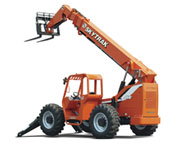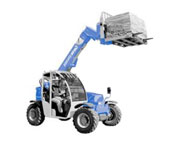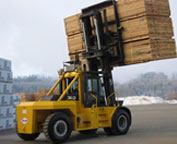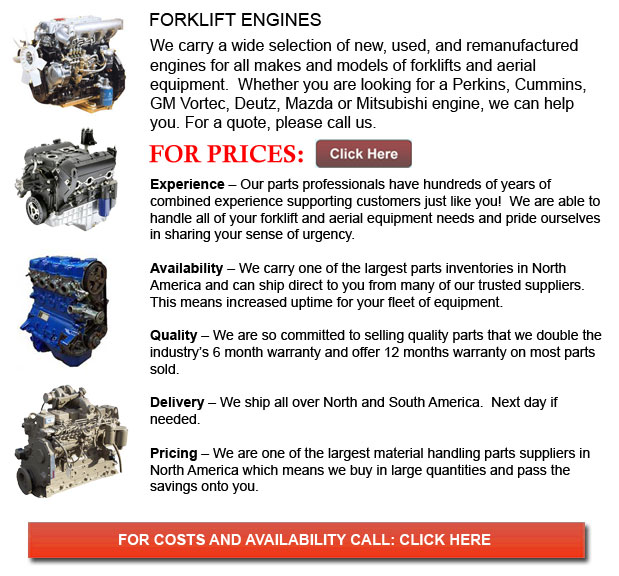
Forklift Engine - An engine, also called a motor, is an apparatus which transforms energy into functional mechanical motion. Motors that transform heat energy into motion are called engines. Engines come in many types like for instance internal and external combustion. An internal combustion engine usually burns a fuel together with air and the resulting hot gases are used for creating power. Steam engines are an illustration of external combustion engines. They use heat so as to produce motion together with a separate working fluid.
In order to generate a mechanical motion through various electromagnetic fields, the electric motor needs to take and create electrical energy. This type of engine is really common. Other types of engine can be driven using non-combustive chemical reactions and some would use springs and function through elastic energy. Pneumatic motors function by compressed air. There are different styles based on the application needed.
Internal combustion engines or ICEs
Internal combustion happens whenever the combustion of the fuel mixes along with an oxidizer in the combustion chamber. In the IC engine, higher temperatures would result in direct force to certain engine components like for instance the turbine blades, nozzles or pistons. This force produces functional mechanical energy by means of moving the part over a distance. Typically, an ICE has intermittent combustion as seen in the popular 2- and 4-stroke piston engines and the Wankel rotating engine. Most rocket engines, jet engines and gas turbines fall into a second class of internal combustion engines referred to as continuous combustion, which happens on the same previous principal described.
External combustion engines like for example steam or Sterling engines differ significantly from internal combustion engines. External combustion engines, wherein the energy is delivered to a working fluid such as pressurized water, liquid sodium and hot water or air that are heated in some type of boiler. The working fluid is not mixed with, having or contaminated by combustion products.
A range of designs of ICEs have been created and are now available together with numerous weaknesses and strengths. If powered by an energy dense gas, the internal combustion engine produces an efficient power-to-weight ratio. Even if ICEs have succeeded in various stationary utilization, their actual strength lies in mobile utilization. Internal combustion engines control the power supply utilized for vehicles like for example aircraft, cars, and boats. Some hand-held power equipments use either ICE or battery power equipments.
External combustion engines
An external combustion engine is comprised of a heat engine where a working fluid, such as steam in steam engine or gas in a Stirling engine, is heated by combustion of an external source. This particular combustion occurs via a heat exchanger or via the engine wall. The fluid expands and acts upon the engine mechanism which produces motion. After that, the fluid is cooled, and either compressed and used again or thrown, and cool fluid is pulled in.
The act of burning fuel using an oxidizer to supply heat is referred to as "combustion." External thermal engines can be of similar use and configuration but use a heat supply from sources like for instance exothermic, geothermal, solar or nuclear reactions not involving combustion.
Working fluid can be of whatever composition, although gas is the most common working fluid. At times a single-phase liquid is sometimes used. In Organic Rankine Cycle or in the case of the steam engine, the working fluid changes phases between liquid and gas.
![]() Click to Download the pdf
Click to Download the pdf
Forklift Parts








Lift Parts Express
TOLL FREE: 1-888-695-7994
forkliftpartsyukon.com
Email Us
About Us



